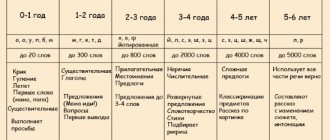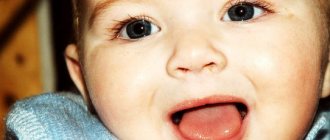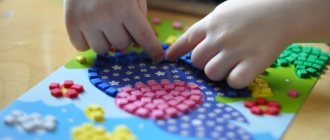In Iktor Dragunsky wrote a funny story “The Enchanted Letter”. Three friends Alyonka, Mishka and the author (as children) saw a truck bring a Christmas tree into the yard. The girl exclaimed enthusiastically: “Look, there are detectives hanging on the tree.” The boys laughed - Alyonka was offended and began to make excuses that the tooth had fallen out, that’s why she said “detective”
.
To which Mishka answered her: “I have three that fell out, and two are wobbly, but I still say it correctly!” Listen here: giggles!
“The guys began to argue until they cried over who was right.
The author of the story, looking at them, laughed for a long time. On the way home, he thought: why were his friends arguing, because the word is simple: “There are no detectives
.
No naked
, but briefly and clear:
Fyfki
! "
The guys, of course, spoke correctly, they just mixed up some sounds.
Perhaps, many parents also noticed that their kids replace whistling ones with hissing ones (shanki - sleds) and vice versa (detectives - shishki). This lack of pronunciation of whistling sounds (S-S', Z-Z', C) and hissing sounds (Ш, Ж, Х, Ш) is called sigmatism. Both groups of sounds appear by 4-5 years. Hissing sounds are considered more complex in articulation and are placed after whistling sounds. A speech therapist corrects pronunciation. But any training with a specialist is reinforced at home. In this article we will tell you about important steps that will help your child disenchant S and Sh faster.
Whistling sounds: where to start staging
Usually, the production of sounds begins with the phoneme C. The first stage is preparatory. The child needs to be shown a picture with sound. You can draw this phoneme, mold it, make it from scrap materials. Explain how the tongue is positioned when pronouncing C (the tip rests on the lower teeth). It is advisable not to say that you are learning the sound C; it is better to name the phoneme, for example, “cold wind”. Next, articulation gymnastics is carried out.
Articulatory gymnastics for producing whistling sounds (exercises by L.A. Komarova)
- “Smile”
- stretch your lips in a smile and hold in this position. The teeth are not visible. - “Fence”
- smile so that your teeth are visible. Fix the position of your lips for a few seconds. - “Chick”
- open your mouth wide. The tongue lies calmly in the mouth. - “Punish a naughty tongue” - open your mouth slightly, put your wide tongue on your lower lip and say “five-five-five...”.
- “Spatula”
- place a relaxed tongue on the lower lip. Place the “spatula” in your mouth, trying not to strain your tongue. - “Tube”
- stick out your tongue and try to bend its edges up to form a “tube”. Blow into the “tube”. - “Jam”
- slowly lick your upper lip with your tongue, then the lower lip in a circle. - “Brushing your teeth”
- using the tip of your tongue, “clean” the lower teeth from the inside (from left to right, from top to bottom). We make sure that the lower jaw is motionless. - “Watch”
- open your mouth, the corners are stretched. The tip of the tongue moves to the right - to the left. - “Snake”
- using a narrow tongue to try to “bite” the palm placed in front of the mouth. The tongue moves forward and retracts back. It is important not to touch your lips and teeth. - “Candy”
– lips are closed. The tongue rests in turn on the left cheek from the inside, then on the right. - “Football”
- build a goal from cubes on the table, put a cotton ball in front of the child. The wide tongue rests on the lower lip. Blow on your tongue with the sound F, trying to move the cotton ball. Make sure your cheeks don't puff out.
Be sure to do exercises to develop air flow. The simplest ones: blowing soap bubbles, blowing out a candle, blowing on a paper boat, blowing cotton wool off a table.
Methods for producing sound C
A well-placed sound C allows you to quickly correct the pronunciation of Z and C, as well as sibilant phonemes. To get C, you need to rest the tip of your tongue on your lower teeth, stretch your lips in a smile and blow. If you bring the back of your hand close to your mouth, you feel a cold stream of air (“cold wind”).
The first way to produce sound is by imitation. In front of the mirror, invite the child to smile, show his teeth (“fence”) and blow on the “fence.” The tongue lies below. You can also imagine that you are pumping the wheels of a car. Pretend with your child that you are pumping tires and saying “sssssssssssssssssssssssssssssssssssssssssssssssssssssssssssssssssssssssssssssssssssssssssssssssssssssssssssssssssssssssssssssssssssssssssssssssssssssssssssssssssssssssssssssssssssssssssssssssssssssssssssssssssssssssssssssssssss scale basis].
If it is not possible to produce sound by imitation, then we try the mechanical method. A roll stick, a cotton swab, or a child’s finger will help here (of course, you need to wash your hands beforehand). We ask the baby to open his mouth. Pay attention to the tongue: sometimes the back is arched upward. Gently press the tongue with a stick or your baby's finger to create a groove through which air should pass. The baby covers his mouth, while keeping his lips in a smile, trying to blow. It turns out “ssss.” For some time, the child can press down the tongue with a finger until he learns to maintain the correct articulatory posture.
Automation C
After the individual sound C has been consolidated, the stage of phoneme automation in the child’s speech begins. For all sounds, automation follows the same scheme:
The most relevant and useful information for modern parents is in our newsletter. We already have over 30,000 subscribers!
- in straight syllables (sa, so, su);
- in intervocalic position (asa, oso, usu);
- in reverse syllables (as, os, us);
- with a combination of consonants (one hundred, one hundred, one hundred);
- in words (sound at the beginning of the word, in the middle and at the end: garden, wasp, pass);
- in sentences (Sonya is sledding);
- in poetry and pure sayings (Sa-sa-sa - here a wasp flies);
- in spontaneous speech (retelling a text, describing a picture).
With successful production of C, it is not difficult to obtain the sound Z: you need to “connect” the ligaments.
Invite your child to “ring” like a mosquito. Raise your index finger up, make rotational movements and make a “z-z-z” ringing sound. It is important to show the baby the difference between S and Z. Place the child’s palm against your throat and say “ssss” - the throat is calm. Now say “z-z-z” - your throat trembles. Let the child do the same on himself. For the sound T, two phonemes T and S are needed. To begin with, we ask the baby to say “t-s, t-s, t-s” and gradually increase the speed of pronunciation until Ts is achieved.
Each delivered sound is processed according to the scheme described above. Then we teach the child to pronounce soft phonemes (S', Z'). When the whistling sounds have become established in the baby’s speech, we begin to introduce the hissing sounds.
Setting the sound Ch
The sound Ch can be made in several ways:
- Start by pronouncing the soft sound t. Pronounce it quickly. In this case, the tongue should touch the tips of the upper teeth, then the tongue is slightly curled, as if stroking the bases of the upper teeth. At the same time, the corners of the lips are stretched into a smile.
- Alternately name the sounds t and sh. Do it quickly. At the same time, the lips are stretched into a smile again.
- To find the hole between the teeth from the inside, you can use a piece of paper. First, the hole is felt with your hands, and then paper is applied there. To hold it, you need to apply force - this is an excellent warm-up for the tongue.
Defectological assistance in educational institutions for preschool children
Hissing sounds: where to start staging
We show the child a card with the sound Ш, draw a phoneme, explain how the tongue is located: now it is at the top, the edges are pressed tightly against the molars. Instead of the phrase “sound Ш” it is better to say “warm wind”, “snake hisses”, “inflate the balloon”.
Articulatory gymnastics for staging hissing (exercises by L.A. Komarova)
- “Cup”
- the mouth is open. Raise a wide, relaxed tongue to the upper lip. Bend the middle part of the tongue and bend the side edges upward. It turns out to be a cup. We take the “cup” inside and take it back out. Do this several times. - “Horse”
- “glue” the tongue to the palate. Thus, the hyoid frenulum is stretched. The lower jaw remains motionless. With a click, we “unstick” the tongue - the “horse” clicks. - “Fungus”
- “glue” the tongue to the palate, open the mouth wide. Hold this position for several seconds. - “Accordion”
- make a “mushroom”. Only now we open and close our mouth, stretching the hyoid frenulum. Keep your tongue “glued” to the palate, lips in a smile. - “Swing”
- mouth wide open. Stretch your tongue either to your nose or to your chin. - “Donut”
– mouth slightly open, lips extended slightly forward and rounded.
“Let’s warm our palms” - imagine that your hands are frozen in the cold. Open your mouth, stretch your lips forward, exhale “x-x-x”, warming your palms.
The exercises that are performed when setting C, “Punish a naughty tongue”, “Spatula”, “Candy”, “Jam”, “Brushing teeth” are repeated when setting Sh. You don’t need to do everything, choose 5-7 of any articulation exercises, and also remember about the development of the air stream.
Ways to make the sound Ш
In front of the mirror, we ask the baby to blow a cold wind onto his palm. Now invite the child to “cup” his tongue by the upper teeth onto the alveoli and try to say “ssss” again. In this position of the tongue you will hear “sh-sh-sh”. If it doesn’t work out, you can hold the roll stick between your teeth (your tongue should lie on the stick, not under it) and blow. Or use a clean finger to hold your tongue up. It is important to explain to the baby that the wide tongue should be behind the upper teeth - then “the snake will hiss.”
After successful consolidation of Ш, we obtain the sound Ж in the same way as the phoneme Z. We place our palm on the throat and ask the child to compare hissing and buzzing: “sh-sh-sh” - the throat is calm, “zh-zh” - the throat is trembling.
To get H, ask your baby to say a soft "t'-t'-t'" and gently move his tongue slightly deeper into the mouth using a spoon/q-tip/clean finger. The sound SH should appear automatically. We fix each phoneme according to the scheme, teach the child not to confuse whistling and hissing. For this purpose, learning poems where both types of sounds are found, and games for differentiating phonemes are suitable.
10 books for automating sounds
- “Speech therapist lessons. Correction of speech disorders”, N.S. Zhukova.
- “Album of a preschooler. Automation of sounds in game exercises”, L.A. Komarova.
- “We learn sounds. Home speech therapy notebook for children 5-7 years old,” E.A. Azova, O.O. Chernova.
- “We pronounce the sounds correctly. Speech therapy album for children 4-8 years old,” T.A. Tkachenko.
- “Home notebook for speech therapy sessions with children”, Yu.B. Zhikhareva-Norkina.
- “Games with paired cards. Speech therapy board games for children 5-7 years old”, Z.T. Bobyleva.
- “I speak correctly”, didactic material by O.E. Thunderous.
- “We are speaking correctly. Games for speech development”, E.M. Kuritsyna, L.A. Taraeva.
- “Album for automating sound pronunciation”, O.I. Lazarenko.
- “Speech therapy album. We speak correctly,” T.S. Reznichenko, O.D. Larina








